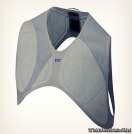题目内容
书面表达
近期英国伊顿公学师生一行将来我校进行交流访问。我校将组织一次参观活动从而让他们更好地了解绵阳。现有两种方案,一种是绵阳博物馆(Mianyang Museum),一种是江油李白故里(Li Bai’s hometown)。假如你是李华,是参与接待的学生代表,请你给组织活动的老师Danny写一封100左右词的信,内容包括;
1、选择其中的一种方案; 2、陈述理由; 3、相关准备;
注意:信的开头已给出(不计入词数)。
Dear Danny,
I am extremely delighted to have a chance to receive our distinguished guests from UK on behalf of all the students. I’m writing to _____________________________________________________________________________________
_____________________________________________________________________________________
_____________________________________________________________________________________
_____________________________________________________________________________________
_____________________________________________________________________________________
_____________________________________________________________________________________
Yours ,
Li Hua
 阅读快车系列答案
阅读快车系列答案

